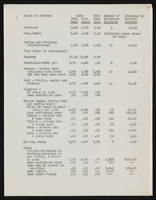Search the Special Collections and Archives Portal
Search Results
Harry Hayden Whiteley Photograph Collection
Identifier
PH-00073
Abstract
The Harry Hayden Whiteley Photograph Collection (approximately 1940-1967) contains photographic prints and one photographic negative depicting buildings, people, and project locations associated with the Las Vegas, Nevada architect Harry Hayden Whiteley. There is also one album containing photographs of contemporary churches compiled by Whiteley between 1953 to 1958.
Archival Collection
Caesars Palace Photograph Collection
Identifier
PH-00251
Abstract
Caesars Palace Photograph Collection (approximately 1965-1989) depicts the famous Caesars Palace Hotel and Casino. The collection consists of twenty-seven images of iconic scenes of Caesars Palace, including its architecture, restaurants, and hotel suites.
Archival Collection
Pagination
Refine my results
Content Type
Creator or Contributor
Subject
Archival Collection
Digital Project
Resource Type
Year
Material Type
Place
Language
Records Classification








